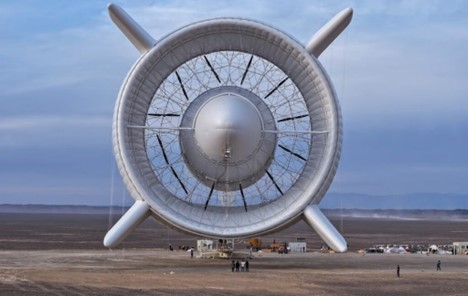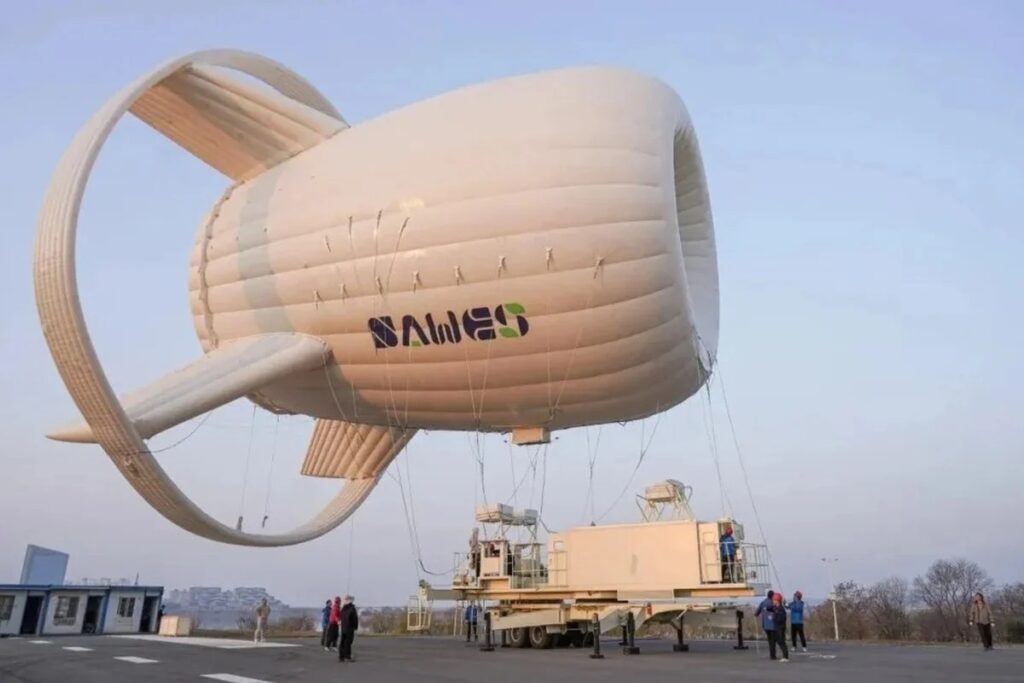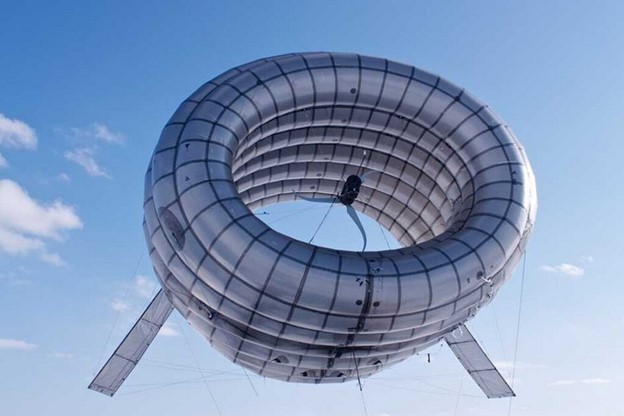Electricity in the air
A new form of wind energy is under development that promises more consistent power and lower deployment costs by adapting the design of a blimp, or zeppelin. Suspended 1,000 feet up where the wind is always blowing, it presents as an ideal energy source for rural communities, disaster areas, or places where wind turbines aren’t feasible to build. The design has grown through multilateral innovation by dozens of engineers and scientists, but an MIT startup called Altaeros, and Beijing-based start-up Sawes Energy Technology have taken it to market. Both have already produced prototypes that boast some serious performance. In 2014, Altaeros’ Buoyant Air Turbine (or BAT) was ready for commercial deployment in rural Alaska, where diesel generators are still heavily relied on for power. Its 35-foot-long inflatable shell, made of the same materials as modern blimps, provided 30 kilowatts of wind energy.
Sawes has managed to greatly exceed the BAT’s power generation, and now hopes to achieve nothing less than contributing a Chinese solution to the world’s energy transition. During a mid-September test, Sawes’ airship-like S1500, as long and wide as a basketball court and as tall as a 13-story building, generated 1 megawatt of power which it delivered through its tether cable down to a collector trailer below. The test conducted in the windy, western desert province of Xinjiang, the S1500 surpassed the capabilities of a windmill turbine by 10-times, which achieved 100 kilowatts in October of last year. Dun Tianrui, the company’s CEO and chief designer, called the megawatt-mark “a critical step towards putting the product into real-world use” which would happen next year when the company expects to begin mass production. The cost of supplying that megawatt to rural grids will be around 1¢ per kilowatt-hour—literally 1% of the cost per kilowatt of the cost for Altaeros’ model from 10 years ago.
One of the major positives of the BAT is that by floating 1,000 to 2,000 feet above the ground, the wind always blows. The blimp does not kill birds either. According to a piece in the Beijing Daily, reported on by South China Morning Post, challenges remain before commercial deployment can begin, including what to do during storms. Blimps may also be used as a mobile phone mast, potentially providing another source of revenue. Also, the turbine can be taken down if winds get too fast as in storms, minimizing potential for damage. Aloft, when winds go over 45 MPH, a winch will automatically springs into action, bringing the blimp to land. One drawback is that BAT loses helium pressure, albeit slowly. Rein says it needs to be repressurized every quarter or so. Before the turbines ship to customers, the company needs to optimize the performance and do some engineering work to make them more durable, the article said.
Rising Hot air
How long does it take to get your blimp license?
A GoodYear or so.
Airport police say that the number of people smuggling helium balloons in their luggage is under control.
But cases continue to rise.
What do you put in a female balloon?
Shelium.
I wanted to have a blimp of my own,
But it turned out to be more than I can afford due to all the inflation!
October 15th Birthdays
1942 – Penny Marshall, 1981 – Keyshia Cole, 1969 – Paige Davis, 1969 – Vanessa Marcil
1996 – William Brent, 1996 – Billy Unger, 1959 – Emeril Lagasse, 1946 – Richard Carpenter





